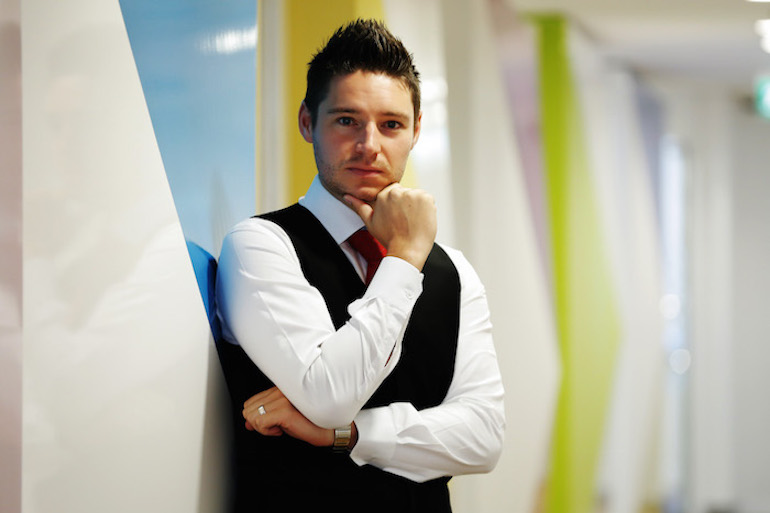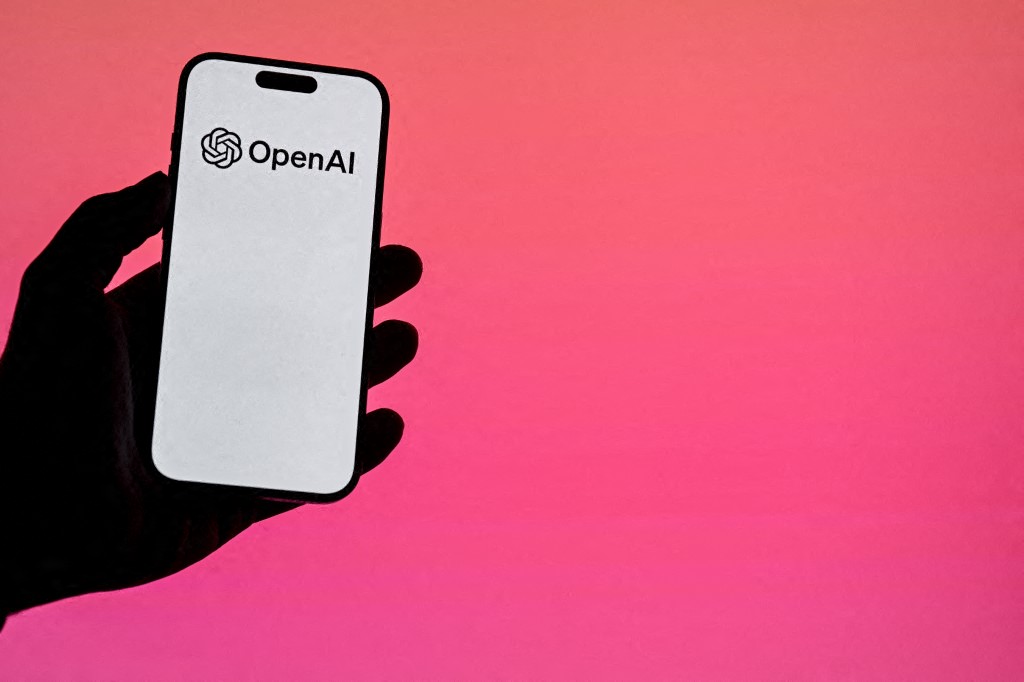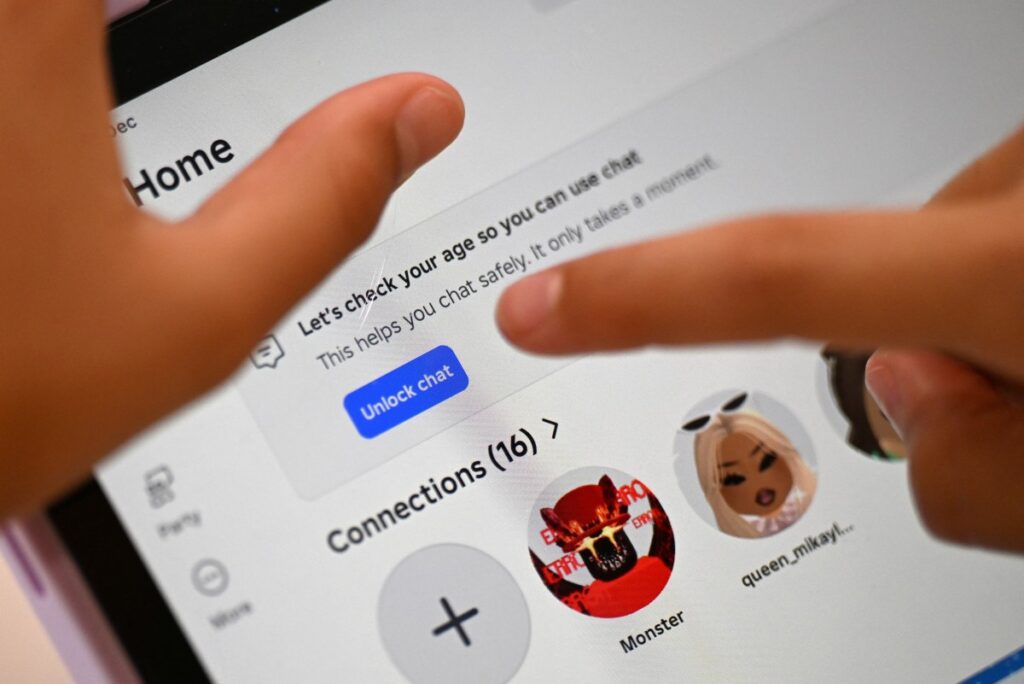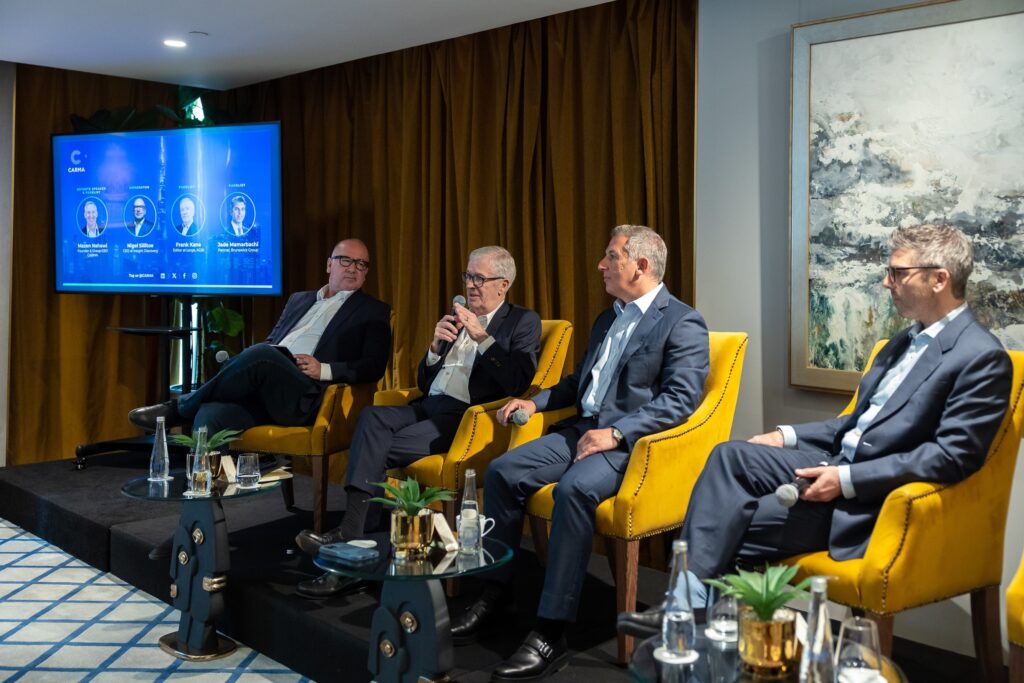Your bi-weekly news on how brands are using bots around the world by Simon Hudson, CEO and founder of Brndstr
Love them or hate them, bots are fast becoming the new vertical for brands to run campaigns on. These programmatic, digital assistants that sit inside social channels are becoming extremely popular around the world. Over the next few weeks, my job is to put together a series of articles is to help you understand why, and make sure you don’t miss out on the next wave of tech.
Starting today, I will be putting a quick overview together every two weeks on what’s BOT and what’s NOT. I will look into the popular trends and latest magic created by brands across the globe with the aim of giving you a deep insight into the world of the robotic assistant.
Before we jump in, a quick intro. My name is Simon Hudson, I am the CEO and founder of Brndstr, a Dubai-based startup that builds and hosts intelligent bots for brands and agencies across the globe. At the start of the year, we opened the region’s first dedicated Bot Studio. Established in 2013, Brndstr has helped over 150 brands across seven countries build hyper-engaging campaigns using cutting edge, automated technology. We love stickers and startup swag and code all of our magic from the Brndstr HQ in JLT. Although BOTS only really became mainstream last April at the Facebook F8 conference, we have been working with Twitter for the past three years helping run successful real-time campaigns.
Clients include McDonalds, CNN, UBER, British Airways, STC and Samsung.
So, now that you know a little more about me let’s talk BOTS
Bots have actually been around for a long time; you will have experienced them when you last called to order food, speak to the bank or book a flight. Being asked to press 1 for Arabic and 2 for English is simply a bot that is designed to save time by directing your call to the relevant agent.
Over the years we have more text chat savvy and opt to send a WhatsApp over picking up the phone to make a call. Platforms such as Facebook Messenger, Twitter, KIK and Telegram have amassed such a huge daily usage that they can now introduce chat bots into the mix.
At the Facebook F8 conference last April, Mark Zuckerberg demonstrated a number of chat bots including CNN, 800-Flowers and KLM. The aim of these bots is to serve the user more instant content in real time. We are now a world that needs instant gratification; having to wait more than five minutes for your UBER to arrive feels like a lifetime. Imagine how we ever lived before!
On that note, here’s the HOTTEST BOT of the week: VW Test Drive Booking BOT for Twitter
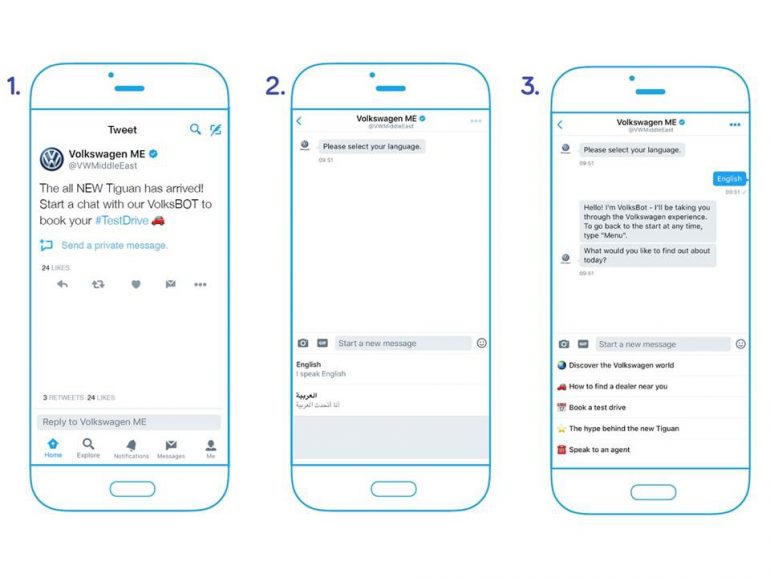
This new digital assistant, named the VolksBOT sits inside the Twitter DM channel and allows users to simply send a message in either English or Arabic to enquire about a car, book a test drive or find the nearest showroom.
Brands may not be familiar with the fact that you can have bots on Twitter as this option was introduced at the beginning of the year and requires an approved partner to develop them. However, with Twitter’s decision to move into this space, brands now have a choice – and a decision – to make between Facebook and Twitter bots. When it comes to social media, a brand strategy usually includes similar content, just tailored for each social channel. For example, say the brand is talking about a new product launch, posts on Facebook may include Live video or hero type images, whereas on Twitter it would be more quick snippets of information about when the launch is, perhaps a RT for reminder campaign.
Introducing chat bots into the mix gives the brand an option to have them assist with the managing of campaigns unique to the channel. Alternatively, they can choose to have a central bot console regardless of the channel.
I will leave you with this information to think about and catch you in a few weeks where we will continue to chat on what brands need to know when building a BOT.

